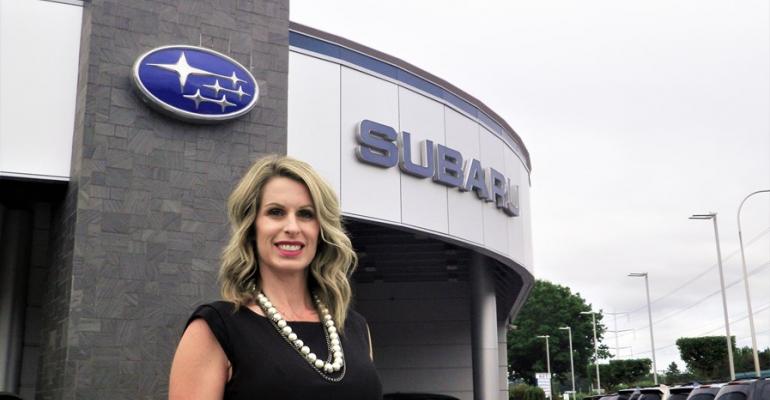If you haven’t lately seen a vehicle wearing a front-end protective bra, as the street once called them, it’s not that they’ve disappeared. It’s that they’ve gone clear and almost invisible.
Commonly referred to today as “clear bras,” it now consists of a film applied to the forward-facing surfaces of the hood, fenders, lights, bumper and often door edges and other vulnerable areas to protect against paint chipping, pitting and related damage, says Kevin Iden of Iden’s Dealer Services.
His company provides on-lot reconditioning and detailing services. Walker Renton Subaru and Walker Renton Mazda in Renton, WA, are clients. “Roughly 25% of our deals include the F&I sale of this product,” says Wendy Borgert, the dealerships’ finance director.
Known as paint protection film in the industry, PPF has become a popular option to fitting a vehicle with a vinyl bra. Some people considered those as unsightly. Ironically they could damage the surface of a vehicle through constant contact and vibration, Iden says.
The clear bra has its origins in wartime. “Paint protection film was born out of the Vietnam era need to protect helicopter rotor edges from debris caused by turbulence in landing zones,” says Mike Beaver of 3M.
His company worked with the military to create a protective polyurethane film that was applied along rotor edges. The contemporary automotive aftermarket application was born in the mid-1990s when new digital-drawing tools enabled intricate pattern-making to fit precise vehicle applications.
“When done correctly, you end up with something that is clear, smooth, and practically unnoticeable,” Iden says.
“Contemporary coatings now self-heal, all but eliminating minor scratches in protected paint finishes,” Beaver says. “The product is designed to last up to a decade or more, and is nearly optically clear along with non-yellowing.”
Borgert says the applications are most popular on new cars and low-mileage certified pre-owned vehicles.
“The film protects a vehicle’s front from damage to its paint, and that helps retain resale value,” she says. “We believe in the product a lot, and it sells just as well to mid-level buyers as it does to high-line ones. A new car is a new car and people want to protect it.”
PPF is particularly attractive to adventurous motorists who use their vehicle for off-roading and camping, Iden says.
But dealership F&I managers need to introduce the product to customers, because most are not aware it is available, Borgert says. “It’s a profitable product for us. And because it is a non-cancellable product, that’s good for the dealership too.”





